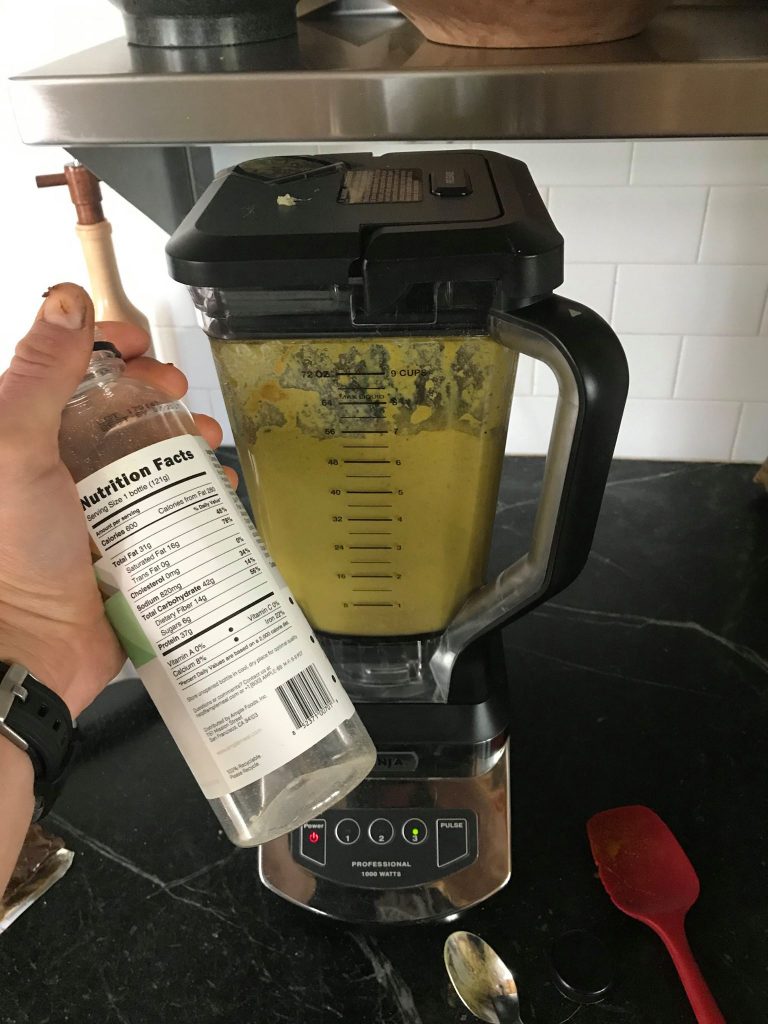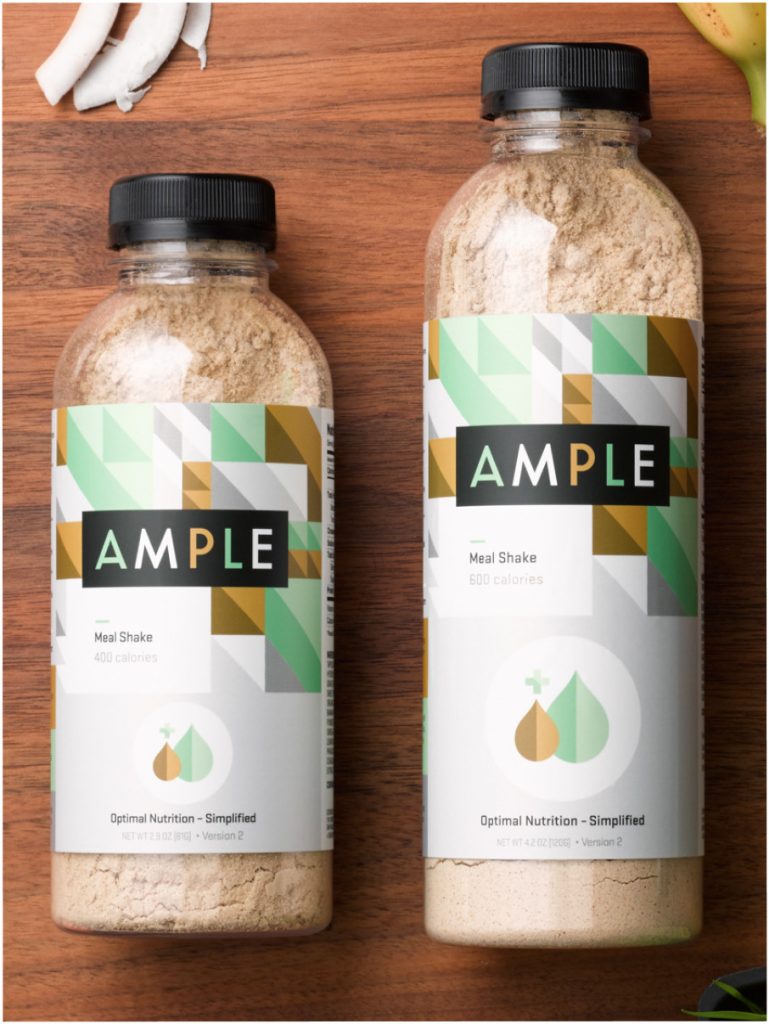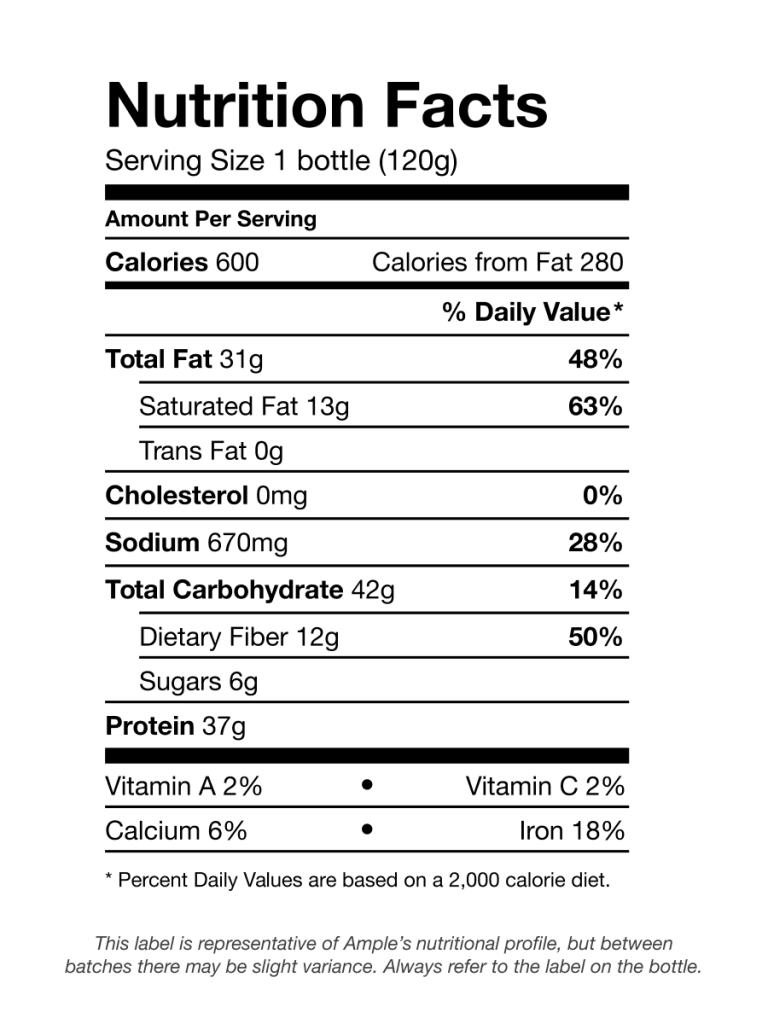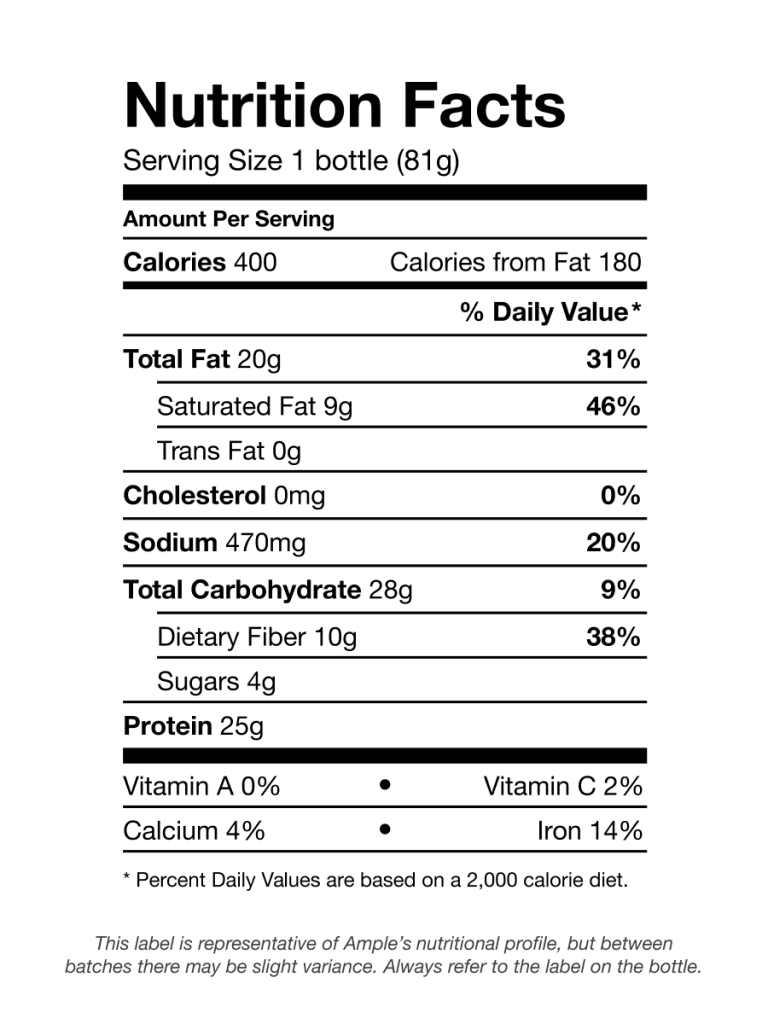May 15, 2017
I have a confession to make.
I've been eating ice cream for breakfast.
Seriously.
After all, Bill Cosby was a fan of dessert for breakfast, right? Ever seen Bill Cosby’s “chocolate cake for breakfast” video?
Now, granted, I am not endorsing Bill's lifestyle based on what has emerged of late about his questionable activities, but there is something to be said for jumping out of bed while drooling over thoughts of something other than a cardboard piece of gluten-free toast or an oily mess of bacon and eggs.
OK, OK, so it's not exactly Cosby-style chocolate cake or a pint of Ben & Jerry's Chunky Monkey ice cream I've been downing every morning, but rather a tasty twist on my “Big-Ass Smoothie” I describe in the article “6 Crazy, Exotic Superfood Cocktails, Shakes & Mind-Bending Recipes.”
Here's exactly how my “ice cream for breakfast” recipe goes:
-Step 1: a giant mugful of ice from my lucky Theodore Roosevelt Man In The Arena mug
-Step 2: 8 ounces of bone broth, full fat coconut milk or my anti-aging bark tea
-Step 3: a squeeze of lemon to prevent oxidation, as explained in my “How To Biohack A Green Smoothie” article
-Step 4: a handful of any greens from the fridge (e.g. spinach, kale, arugula, etc.) or any wild plant from my backyard (e.g. nettle, mint, dandelion leaves, etc.)
-Step 5: a full bottle of the Ample Meal Replacement Powder I introduced in the podcast “The Problem With Meal Replacements, Soylent Knockoffs & A Radical New Superfood“

-Step 6: add sea salt and organic stevia to taste
-Step 7: blend on high speed for 2 minutes while you do jumping jacks, push-ups, burpees or any body weight exercise of choice
-Step 8: top with a handful of unsweetened coconut flakes and organic cacao nibs for a bit of added texture and crunch
-Step 9: look at the camera, smirk and drink (or, in my case, eat with a spoon or spatula)

With my hectic travel schedule, I've also been eating a variation of this recipe on airplanes and in airports, where, sadly, they do not allow me to blend at high speeds, but where I can approximate this recipe by:
-Step 1: waltzing up to the Starbucks counter and asking for a plastic cup and plastic spoon
-Step 2: dumping a bottle of Ample into the cup
-Step 3: adding a handful of raw almonds or very dark chocolate (both can be purchased at most airports) for added crunch
-Step 4: adding water slowly until texture is just barely “clumpy” and pudding-like
-Step 5: eating with a spoon as I judge with harshness my airplane seatmate's greasy, heart-stopping bag of burgers and fries
So why am I such a fan of Ample? In this article, I'll tell you exactly why, show you the ingredients within Ample, and reveal the unique approach that Ample's inventor, formulator and my friend Connor Young has used in creating this delicious, guilt-free, gut-healing, probiotic-rich, low-carb friendly, all-natural meal replacement powder.
And if you want to skip straight to the goodness and start eating Ample right away, you can simply go to AmpleMeal.com and use code GREENFIELD for a big, fat 15% discount (discount applies to everything but their “lifetime” supply option).
The Ingredients In Ample
Ample is pretty unique stuff, really. Here's the nutrition label:

It comes in a 400 calorie version, and also a 600 calorie version, as shown below:

And here's the macronutrient breakdown:


Ample was originally designed to provide “healthy sustenance for high performing individuals”. It was formulated to maximize a slow bleed of energy over a multi-hour period, refuel a body with all major macronutrients (including prebiotics, probiotics and antioxidants), be non-GMO and achieve a few choice biochemical objectives:
1. Maintain proper hormonal response
Hormonal issues such as insulin and leptin resistance can lead to obesity, cause diabetes, trigger energy crashes, and prevent someone from feeling full. Ample combats this by keeping sugar and carbohydrate content low, and including multiple forms of fiber and resistant starch that slow absorption and feed a healthy gut microbiome. Ample contains 17 net grams of carbs for a 400 calorie version, and from their initial tests (various N=1 so far, with a future clinical study planned), it appears that Ample doesn’t raise blood glucose substantially (9 ml/dl on average over a 2 hour period, but I encourage you to do your own N=1 experiment.) This is probably because Ample has enough fiber and fat to slow down the glucose absorption quite a bit.
2. Control inflammation
Inflammation is part of your body’s natural immune response, but chronic inflammation from food is bad news. As I discuss in my interview with “Deep Nutrition” author Cate Shanahan, it been shown to be a major cause of chronic diseases such as obesity, diabetes, and Alzheimer’s. Ample is low in omega-6, sugar and carbs, and has minimized ingredient processing to minimize any amount of inflammation.
3. Minimize oxidation
Oxidation through free radicals can cause inflammation and lead to brain fog, accelerated aging, weight gain, and other sad face-inducing consequences. Ample contains a high amount of omega-3 fats and antioxidants such as polyphenols and catechins from plants and cacao, which scavenge free radicals to combat oxidation.
4. Support microbiome health
The gut microbiome is the term for the trillions of bacteria cells in all people that help your body to break down and correctly absorb nutrients from food. Microbiome health affects hormones, immune system, and even gene expression. Ample was designed to feed the “good” bacteria with fiber, prebiotics, and probiotics, while starving the “bad” bacteria of sugar, excess carbs, and poor quality nutrients.
So how does Ample achieve all this? In short, with a proper blend of proteins, lipids, and probiotics. Let's begin with protein.
Protein
The goal of the protein in Ample was relatively simple: to get enough of the right amino acids. First off is a PDCAAS of 1. Protein digestibility-corrected amino acid score (PDCAAS) is a method of evaluating a protein quality based on both the amino acid requirements of humans and their ability to digest it, and a PDCAAS of 1 is as high as you can get. This is easy to do with whey protein, which has also been shown to increase glutathione significantly. Collagen was then added for extra glycine of course, along with rice protein to give more viscosity.
There are actually two versions of Ample: Ample and Ample X. The difference is in the protein. The original Ample contains whey, collagen and rice, while Ample X has rice protein only, specifically formulated for vegetarians or vegans. Yes, this means Ample X technically doesn’t have a PDCAAS of 1, because it’s actually limited in lysine. So Ample is currently adding pea protein to bolster that. Pea protein is high in lysine, but low in methionine and cysteine (which rice has an abundance of). Thus, with a balance of pea and rice, you get a combined PDCAAS of 1.
The challenge from a food science perspective is the fact that most pea and rice proteins taste absolutely awful, and have a super chalky flavor. But the Ample X stuff tastes super smooth, and this because enzymatic (not acid) hydrolysis of the protein is used on these proteins, which also makes them far more digestible too.
In a nutshell, it can be difficult for active individuals to get enough high quality protein. This is why Ample is packed with over 24 grams of quality protein to provide sufficient amino acids for muscle synthesis and satiety.
Lipids
Ample’s fat comes from coconut oil, macadamia (high in monounsaturated fats and omega 7 fatty acids), chia seeds (omega-3f fatty acids), and a bit of sunflower lecithin for the choline.
The problem with creating a meal replacement powder higher in fat is that lipids are by far the most difficult (and therefore differentiated) part of creating a meal replacement formula. See, when you take coconut oil or whatever other type of oil you use in a formula, you have to spray dry it on a base that is typically comprised of carbohydrates – and 99% of the time, the standard carbohydrate used for this is GMO corn maltodextrin. But Ample convinced their suppliers to use the far healthier tapioca dextrin, and also figured out how to use a lot less of it than others would use.
Ultimately, Ample contains plenty of coconut, macadamia, chia seed, and sunflower to provide your body with a full spectrum of healthy fatty acids like monounsaturated fats, MCTs, and omega-3s. This provides fuel and supports cell health while limiting inflammation.
Fiber, Probiotics & Prebiotics
It was necessary to add a comprehensive source of fiber and prebiotics to Ample, because even the most health conscious people don’t get enough fiber and prebiotics. Yet, these added components have been proven to lead to better gut health, better hormonal balance, higher immune function, lower risk for obesity and weight gain, lower inflammation and fewer autoimmune reactions.
So to add resistant starch, soluble and insoluble fiber, and fructooligosaccharides, the folks at Ample opted to use psyllium husk, green banana fiber, artichoke inulin, and acacia fiber. Generally, most people I talk to have been reporting that they feel better after they’ve used Ample for a while (approximately 3-6 weeks). This is likely because many of their colons haven’t been exposed to adequate amounts of prebiotics or probiotics, so it takes a few weeks for the probiotics to colonize the colon, and the prebiotics to shift the gut microbiome accordingly.
If you visit AmpleMeal.com, you'll find a host of information on each probiotic strain used in Ample. In general, much of the thought went into getting the most hardy strains that survive the stomach. The most studied probiotic in Ample is Bacillus coagulans, which is a spore-forming, gram-positive bacteria that survives the passage through the stomach extremely well. Bacillus coagulans has also been shown to treat dyslipidemia by improving the HDL to LDL ratio, and the HDL to total cholesterol ratio.
Overall, Ample contain 9 grams of four different types of fiber to keep you full, support digestive health, and nourish your gut microbiome. Ample also contains six of some of the most effective probiotic strains for the human gut microbiome, which help absorb and digest nutrients.
Summary
Let's review these ingredients, which you can read about in far, far more detail here:
Protein Blend:
Ample: Grass-fed Whey Protein Concentrate, Hydrolyzed Pea Protein, Grass-fed Hydrolyzed Collagen Protein
Ample X: Organic Hydrolyzed Brown Rice Protein
Lipid Blend:
Coconut Oil, Macadamia Nut Oil, Sunflower Lecithin, Omega-3 Chia Seed Extract
Carb, Prebiotic and Fiber Blend:
Tapioca Dextrin, Organic Psyllium Husk, Organic Sweet Potato, Organic Jerusalem Artichoke Inulin, Green Banana Resistant Starch, Acacia Fiber
Plant-Based Micronutrient Blend:
Organic Cocoa, Organic Wheatgrass, Organic Barley Grass, Organic Chlorella
Probiotic Blend:
Lactobacillus acidophilus, Lactobacillus paracasei, Bifidobacterium lactis, Bifidobacterium infantis, Lacobacillus rhamnosus, Bacillus coagulans
Other Ingredients:
Dried Honey, Sea Salt, Natural Vanilla Flavor, Lemon Juice*, Cinnamon, Monk Fruit, Stevia
So that's it. And that's what I'm now eating for breakfast and using as one of my go-to travel meal replacement powders.
If you want to try this stuff, you can simply go to AmpleMeal.com and can use code GREENFIELD for a big, fat 15% discount (discount applies to everything but their “lifetime” supply option).
You can also go tune into the podcast “The Problem With Meal Replacements, Soylent Knockoffs & A Radical New Superfood” to hear my interview with Ample inventor and formulator Connor Young.
Oh, yeah – one other thing: An IRB approval was received for studying whether using 1 Ample per day for 6 weeks would be a healthy breakfast substitute, and help improve normal physiological function. Chris Masterjohn, my former podcast guest, wrote the proposal, and I'll keep you posted on what they discover about how Ample affects inflammatory markers like insulin, triglycerides, glucose, HbA1C, gut microbiome diversity index and much more.
In the meantime, do you have questions, thoughts or feedback about Ample meal replacement powder? Leave your comments below and one of us will reply!














Really want to get this as i travel a lot and would be handy but wondering if there is something i could add to it to decrease the iron i would absorb from it as I’m already a bit to high in iron.
Sounds yum! Can I make this ahead of time and eat it in batches?
Also, can Ample be made with hot water or hot tea?
Yes, you can make it ahead of time and enjoy later if it is sealed properly and frozen.
Is this meal enough to meet a days worth of macronutrient needs ?
It's mean to replace one meal, not an entire day's worth of eating.
Thank you! <3
Hi! Im having a lot of trouble finding your recipe for your sleep edibles. Is there a link where I can find it please?!
You'll find it here! https://bengreenfieldfitness.com/2017/02/bgf-week…